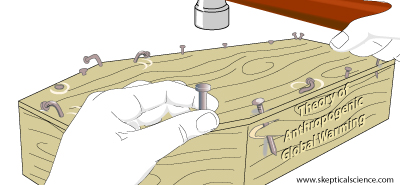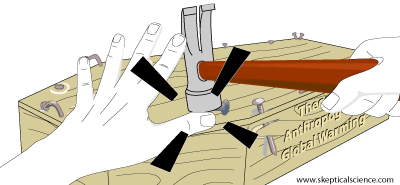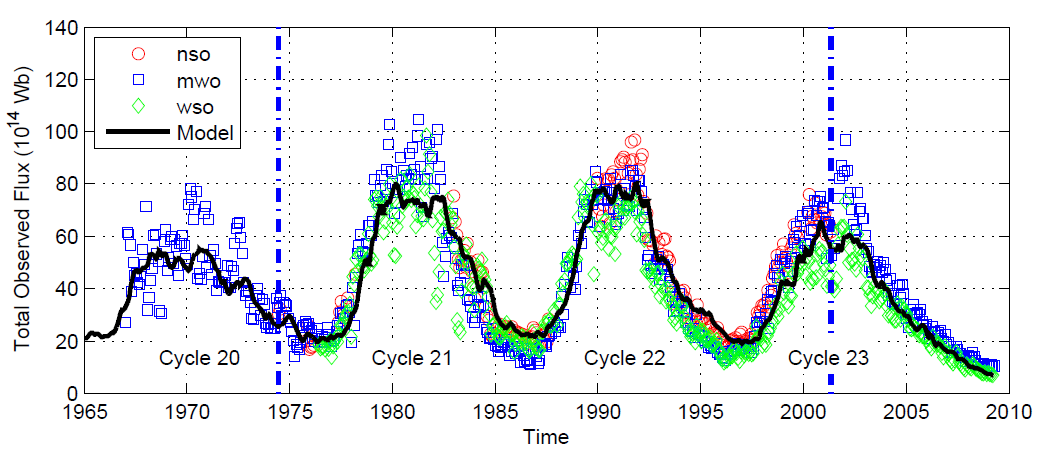CERN - Saying Nothing About Cosmic Ray Effects on Climate
Posted on 13 September 2011 by dana1981
CERN scientist Jasper Kirkby, about his recent cosmic ray experiment:
"At the moment, it actually says nothing about a possible cosmic-ray effect on clouds and climate, but it's a very important first step"
At CERN, Europe's high-energy physics laboratory near Geneva, Switzerland, scientists created an experiment to test how clouds are formed. The experiment ties in with a climate "skeptic" hypothesis that cosmic rays (charged particles from space) are causing global warming. As the hypothesis goes:
Solar magnetic field gets stronger => More cosmic rays are blocked from reaching Earth => Clouds, which are hypothetically seeded by cosmic rays, are less likely to form => Fewer clouds means more sunlight reaches Earth's surface => More sunlight means warmer temperatures => global warming!
Many climate "skeptic" bloggers and commenters have claimed that the CERN experiment has proven that cosmic rays are causing global warming, and that the experiment is "the final nail in the man-made global warming coffin" (i.e. here and here and here and here). It's always the final nail in the coffin, isn't it?

In reality, the CERN experiment only tests the bolded step in this list of requirements for cosmic rays to be causing global warming:
- Solar magnetic field must be getting stronger
- The number of cosmic rays reaching Earth must be dropping
- Cosmic rays must successfully seed clouds, which requires:
- Cosmic rays must trigger aerosol (liquid droplet) formation
- These newly-formed aerosols must grow sufficiently through condensation to form cloud-condensation nuclei (CCN)
- The CCN must lead to increased cloud formation
- Cloud cover on Earth must be declining
In short, the CERN experiment only tested one-third of one out of four requirements to blame global warming on cosmic rays. Whoops, not quite a nail in the coffin!

Additionally scientists have measured solar activity and the number of cosmic rays reaching Earth, and neither meets the first two requirements listed above. Both solar magentic field strength and the number of cosmic rays reaching Earth have been flat over the past 50+ years (Figure 1).
Figure 1: Solar Magnetic Field Strength from 1967 to 2009 (Vieira and Solanki 2010)
A number of other recent studies have also found that cosmic rays have minimal influence on cloud formation, and thus minimal influence on global warming.
As Dr. Kirkby said in the quote above, it is an important first step, just like buying eggs is an important first step in baking a soufflé. But just having some eggs doesn't mean I can bake a successful soufflé. There are a whole lot of other requirements necessary for me to bake a soufflé, and believe me, I don't meet them!
As is always the case, this climate "skeptic" declaration about "the final nail in the coffin" is no such thing. Not even remotely close. Every time they declare the man-made global warming theory dead, it comes back to life.

Note: Graphics provided by SkS user jg. This is the Basic rebuttal to CERN CLOUD experiment proved cosmic rays are causing global warming. Thingsbreak's CERN post has been adapted into the Intermediate version. The rebuttal can also be found at te short URL http://sks.to/cern.































 Arguments
Arguments































[DB] "and this is a moderate confirmation of his link"
Nope; this has been pointed out to you before & still you repeat the meme.
Also, you are still ducking Albatross' questions here. A real skeptic would embrace challenges, not hide from them.
[DB] Now thumbnailed; click on it for larger 1050x454 native resolution.
Perhaps you could elaborate on your final point and respond to the criticism of the PMOD data used by Lockwood/Frolich. To the untrained observer, it is non-obvious where the charge of poor science should land.
[DB] "Sorry, I don't have access to the scientific literature."
Chris' link to Lean and Rind 2008 was directly to an openly-available copy. Lockwood 2010 similarly was/is freely available (via link from Chris' link), here.